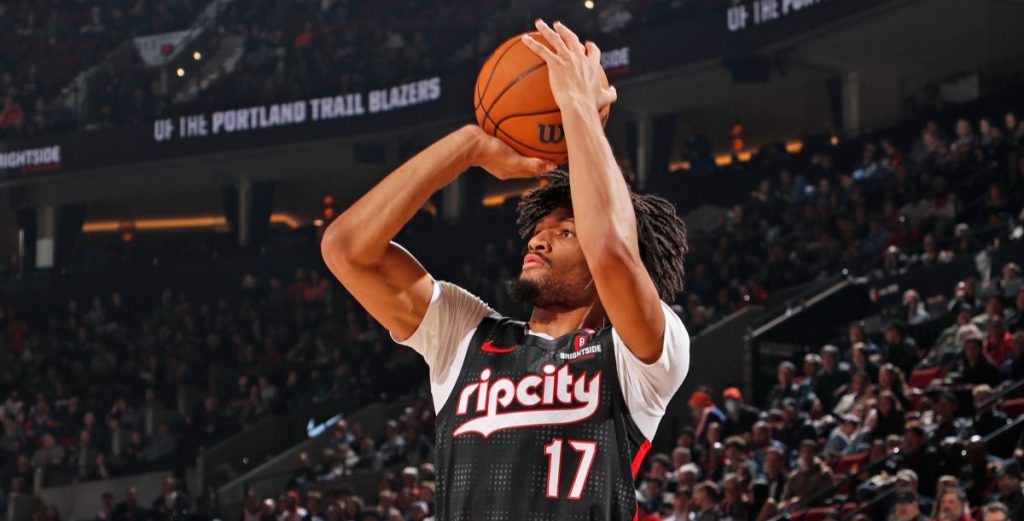In about a month, the Portland Trail Blazers will kick off their 2025-26 regular season. As the start date approaches, we will analyze their revamped roster from various perspectives. We begin with a multi-day series addressing the crucial questions the franchise faces as it shifts from rebuilding to competing in the NBA Playoffs.
Today, we’ll focus on a familiar challenge that looms like an important exam: long-range shooting.
Three-point shooting is crucial in the contemporary NBA. Not only does it score an additional point per basket, but it also opens up the offense by drawing defenders away from the paint, which facilitates driving, passing, and offensive rebounding.
Each of these factors is vital to Portland’s offensive strategy. Let’s examine their likely lineups, comprising starters and notable bench players:
Shooting Guard: Shaedon Sharpe
Small Forward: Deni Avdija
Power Forward: Toumani Camara, Jerami Grant
Let’s consider how these players will operate in halfcourt situations.
Holiday can function as a playmaker but may not be a consistent scorer at this stage of his career. He is likely to come off screens and seek out options, while also playing off the ball as a secondary shooter. Henderson has enhanced his catch-and-shoot skills over two seasons, yet his strength remains driving to the basket or assisting others.
Sharpe excels in driving to the hoop or pulling up for a shot, while Avdija can score from various levels but may struggle with isolation plays. Camara seeks corner threes or driving opportunities against weakened defenses, and Grant is well-versed in isolation scoring, comfortable taking midrange shots as well. Clingan focuses on offensive rebounds and scoring near the basket.
- There is no clear dominant scorer in the lineup; effective teamwork and selflessness will be crucial.
- Most players rely on clear driving or passing lanes to succeed.
Considering three-point shooting percentages from last season, we see the following:
- Holiday: .353
- Henderson: .354
- Sharpe: .311
- Avdija: .365
- Camara: .375
- Grant: .365
- Clingan: .286
The league average for three-point shooting is around 36%. The Blazers are average, but two key players, Sharpe and Clingan, fall below that standard.
This raises an important question: without a dominant scorer to attract defensive focus, and lacking above-average long-range shooters, why would defenders not just pack the paint? How will the Blazers create opportunities for drives and passing when they struggle for space?
The risk is that Portland’s halfcourt offense devolves into isolation plays that don’t suit the players, leading to streaky three-point shooting. If that occurs, their success will depend heavily on whether the shots are falling.
This issue was similar last season when Grant and Anfernee Simons were the primary scorers, resulting in over-reliance on three-point shooting when isolation plays fell flat. This raises the question: is the problem rooted in the players, or is it a systemic issue?
The Blazers must demonstrate they’ve addressed these concerns and can improve their halfcourt efficiency. Better shooting could enhance overall team performance, but until they establish greater consistency, each game will present new challenges for the roster.



